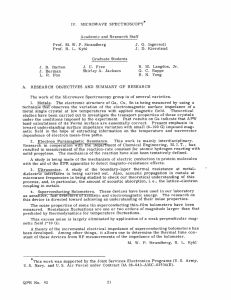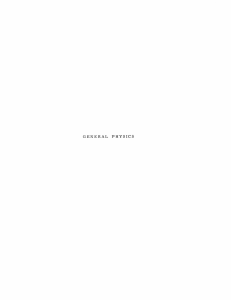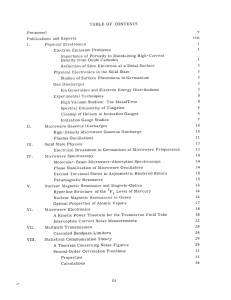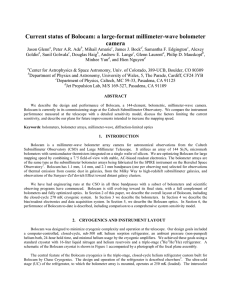II. MICROWAVE SPECTROSCOPY: Academic and Research Staff
advertisement
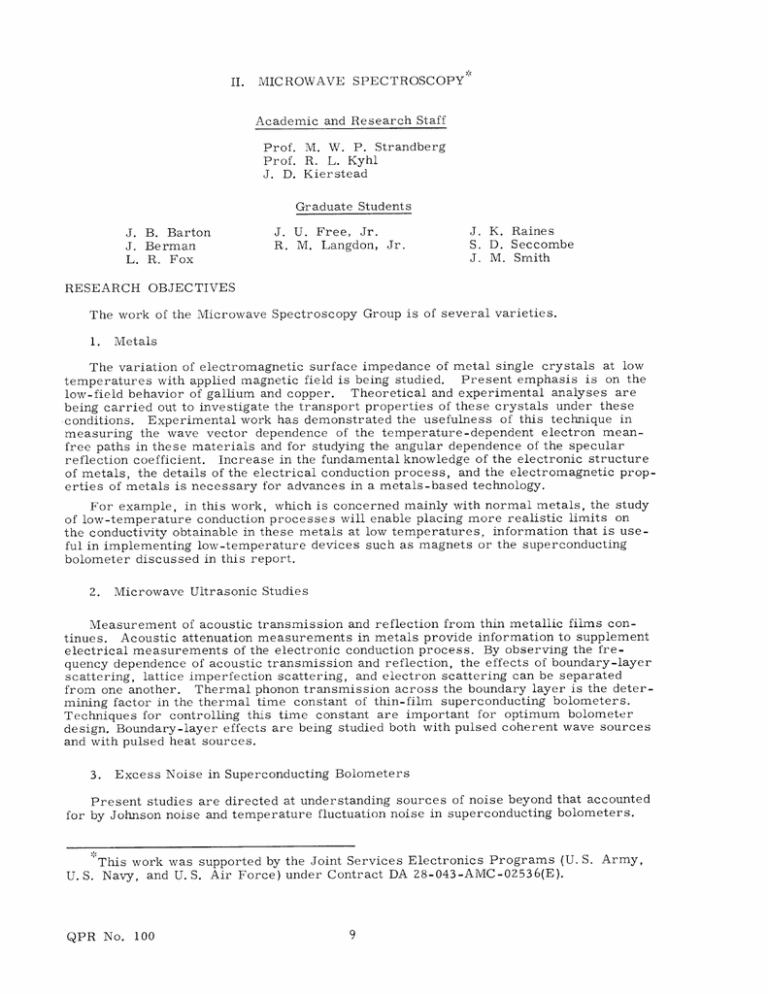
II. MICROWAVE SPECTROSCOPY: Academic and Research Staff Prof. M. W. P. Strandberg Prof. R. L. Kyhl J. D. Kierstead Graduate Students J. B. Barton J. Berman L. R. Fox J. U. Free, Jr. R. M. Langdon, Jr. J. K. Raines S. D. Seccombe J. M. Smith RESEARCH OBJECTIVES The work of the Microwave Spectroscopy Group is of several varieties. 1. Metals The variation of electromagnetic surface impedance of metal single crystals at low Present emphasis is on the temperatures with applied magnetic field is being studied. Theoretical and experimental analyses are low-field behavior of gallium and copper. being carried out to investigate the transport properties of these crystals under these conditions. Experimental work has demonstrated the usefulness of this technique in measuring the wave vector dependence of the temperature-dependent electron meanfree paths in these materials and for studying the angular dependence of the specular reflection coefficient. Increase in the fundamental knowledge of the electronic structure of metals, the details of the electrical conduction process, and the electromagnetic properties of metals is necessary for advances in a metals-based technology. For example, in this work, which is concerned mainly with normal metals, the study of low-temperature conduction processes will enable placing more realistic limits on the conductivity obtainable in these metals at low temperatures, information that is useful in implementing low-temperature devices such as magnets or the superconducting bolometer discussed in this report. 2. Microwave Ultrasonic Studies Measurement of acoustic transmission and reflection from thin metallic films continues. Acoustic attenuation measurements in metals provide information to supplement electrical measurements of the electronic conduction process. By observing the frequency dependence of acoustic transmission and reflection, the effects of boundary-layer scattering, lattice imperfection scattering, and electron scattering can be separated from one another. Thermal phonon transmission across the boundary layer is the determining factor in the thermal time constant of thin-film superconducting bolometers. Techniques for controlling this time constant are important for optimum bolometer design. Boundary-layer effects are being studied both with pulsed coherent wave sources and with pulsed heat sources. 3. Excess Noise in Superconducting Bolometers Present studies are directed at understanding sources of noise beyond that accounted for by Johnson noise and temperature fluctuation noise in superconducting bolometers. This work was supported by the Joint Services Electronics Programs (U. S. Army, U. S. Navy, and U. S. Air Force) under Contract DA 28-043-AMC-02536(E). QPR No. 100 (II. MICROWAVE SPECTROSCOPY) Several possible sources of noise are being investigated. One is flux-flow shot noise which is expected to be detectable at the low-temperature edge of the transition region where transverse flow of quantized flux vortices is the principal dissipation mechanism. Another possible source, the fluctuation in entropy transport mechanism, may possibly yield an explanation for the anomalous temperature-fluctuation noise observed in these bolometers at zero magnetic field, which is suppressed by the application of a magnetic field, of the order of a few Gauss. Measurements must be made on several different superconducting metals to see if the unexplained excess noise is a fundamental property of the superconducting-to-normal transition or is associated with the detailed structure of specific metals. When the excess noise is suppressed by application of an external field the noise figure of the bolometer is limited only by thermodynamic considerations, and thus is on a par with other detection devices that are sensitive to heat energy. 4. Dielectric Waveguides Field-theory calculations are being started on the mode patterns of dielectric waveguides of rectangular cross section. The results will be valid in the limit of high dielectric constant as in rutile or the titanates. Previous analyses have lacked accuracy. Accurate patterns for rectangular guide with the dielectric constant differing only slightly from the surrounding medium have only recently been obtained at Bell Telephone Laboratories. Our mathematical techniques have been successfully checked out by solving for the cutoff patterns on a thin dielectric ribbon. These analyses should be useful, for example, in the design of compact resonators for microwave integrated circuits. R. L. Kyhl, M. W. P. Strandberg A. FLUX-FLOW NOISE IN SUPERCONDUCTING BOLOMETERS Flux-flow noise in the frequency range 0. 1-10 MHz has been observed in a super- conducting thin film of tin in a perpendicular magnetic field. Flux flow is the dominant resistive mechanism in the film at the low-temperature edge of the superconductingto-normal transition. A correlation scheme, designed for the detection of low-level noise, was used to measure the total integrated noise power from 0. 1 MHz to 10 MHz. Fig. II-1. QPR No. 100 Correlation scheme for detecting low-level noise. (II. MICROWAVE SPECTROSCOPY) This correlation technique, outlined in Fig. II-1, is the same as that used by Michael K. Maul in our previous noise measurements of bolometers. The dimensions of the tin film were the following: length ~60 cm, width ~0. 1 mm, thickness ~1000 A. These dimensions were chosen to optimize the flux-flow noise output. Preliminary analysis of the data leads to the conclusion that the vortex velocities are quite high, 104 cm/sec or greater, and that the flux vortices move across the film in bundles rather than independently. Power spectral density measurements are planned which should yield more information on flux flow. J. M. Smith QPR No. 100

